At around $1800, the Milvus 1.4/85 is composed of 11 elements in 9 groups, using a mix of exotic anomalous partial-dispersion glass types, including what Zeiss calls a “floating elements” design for improved close-focus performance down to 2.62 feet (0.8m). However, unlike the pricier Otus, the new lens shuns an aspherical surface in its optical formula in the pursuit of improving background blur.
Externally, the lens has a much more modern appearance than the lens it replaces, with smooth surfaces, gentle curves, and a shaped hood that matches the body design. Like others in the Milvus line, it features protection from the elements with sealing against dust and moisture, and the ZF.2-mount version for Nikon has an aperture collar with a de-click option for quiet, continuous adjustment.
With a 77mm accessory thread, and measuring 4.33 x 3.54” (110 x 90mm), the lens is not exactly what you could call compact. It is also quite a heavy lens, weighing in at 4.68 oz (1210g) for the reviewed ZF.2 Nikon-mount model.
We’ve analyzed the lens using the second generation, 36-Mpix full-frame Nikon D810, and are delighted to share the results.
Measurements: Excellent sharpness and uniformity
When tested on the highest-resolution body in the Nikon line up, the full-frame 36-Mpix Nikon D810, the new 85mm achieved outstanding results for sharpness. Indeed, the new lens out-resolves the camera. It also has excellent control of distortion, extremely low lateral chromatic aberration (measuring just 4 microns at its highest level), and as you might expect from Zeiss, it has excellent transmission at 1.6T-stop. Vignetting is relatively low at –1.9 EV in the extreme corners, although the appearance is heavier than that figure suggests.
Comparison 1: Carl Zeiss Milvus 1.4/85 ZF.2 Nikon vs. Carl Zeiss Planar T 85mm f/1.4 ZF2 Nikon: Improvement in sharpness wide-open
Although the new Zeiss Milvus 85mm replaces the earlier 1.4/85 Planar T* from the Classic line, it has a completely redesigned optical formula rather than a simple re-shelling like the Milvus 2/100M we reviewed earlier. The earlier model is rather disappointing in terms of sharpness, particularly wide-open, though the performance improves dramatically by f/2.8, and has excellent symmetry from f/5.6 onwards. However, the new lens is sharper at every aperture, and when stopped down to just f/2, it is sharper than the older lens at its optimum aperture.
Like a lot of modern designs, the new lens reaches peak sharpness early at just f/4, while the optimum is between f/5.6-8. While it is an exceptionally sharp lens, the new model is also exceptionally well-corrected for lateral chromatic aberration. Even wide-open, it’s practically absent except in the extreme corners.
One area in which the old lens was impressive was in its control of vignetting, where it has gradual fall-off to the corners. The new lens, by comparison, isn’t quite as distinguished. Vignetting is much more pronounced wide-open and is still just visible at f/2.8, where the older lens has none.
Comparison 2: Carl Zeiss Milvus 1.4/85 ZF.2 Nikon vs. Carl Zeiss Distagon T* Otus 1.4/55 ZF.2 Nikon vs. Nikon AF-S Nikkor 85mm f/1.4G: Close to Otus-grade image quality
No one would argue that $1800 isn’t a lot of money, but in this company, the new Milvus model is the most affordable. The oldest model, the Nikkor, is around $2200, while the Otus costs $4000. The Otus is still the best-performing 85mm you can buy for Nikon D810, but the Nikkor is a solid performer with an excellent and well-deserved reputation, and as an autofocus model, it’s hard not to like it. However, it’s not perfect and doesn’t quite have the same bite as either the Milvus or the Otus wide-open. Even at its best-performing aperture, it’s just not quite as sharp.
The Milvus is as close to the performance of the pricier Otus as it gets, and surprisingly, it is both sharper and more uniform in its sharpness at its peak and optimum apertures than the Otus. The Otus, however, is the sharper model wide-open and is still just slightly better across the frame by f/2. Zeiss’s newer model also has lower chromatic aberration, somehow, and with more control over sharpness between f/1.4-2.8, the Milvus is arguably the better-suited of the two for portraiture. The only downside is the heavier vignetting, though with the degree of control that software offers, that is less of an issue these days.
Conclusion
Possessing a certain character wide-open but with rather low sharpness, the predecessor to this new lens was beginning to look a little dated, so it is perhaps unsurprising to see a completely redesigned model. What is surprising, however, is just how well the Milvus 1.4/85 performs. At around half the price of the Otus, the optical performance of the new model isn’t far behind. Indeed, at most apertures, the new lens is slightly sharper and even has slightly lower levels of lateral chromatic aberration (though bear in mind that we don’t test for other types of fringing). Wide-open, the Otus is a better performer: it is sharper and it has lower vignetting, but unless that’s crucial, the new Milvus 85mm f1.4 is likely the better choice — especially for portraits, where photographers value control of sharpness in a lens rather than outright acuity.


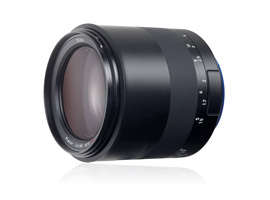


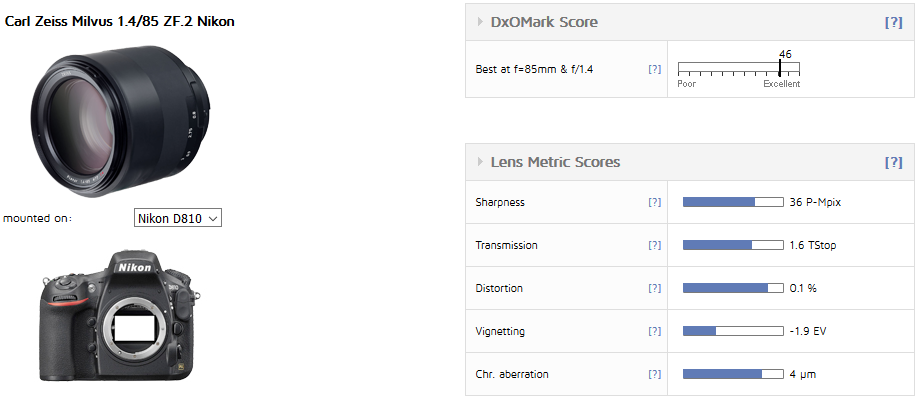

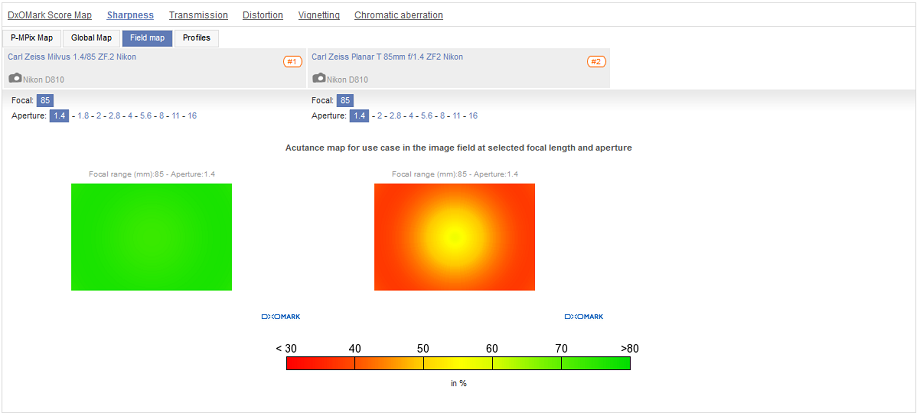
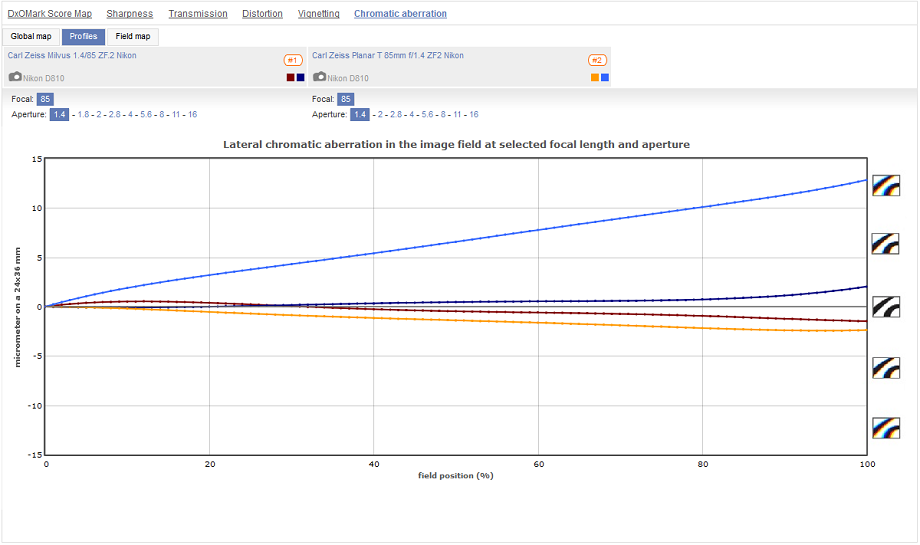
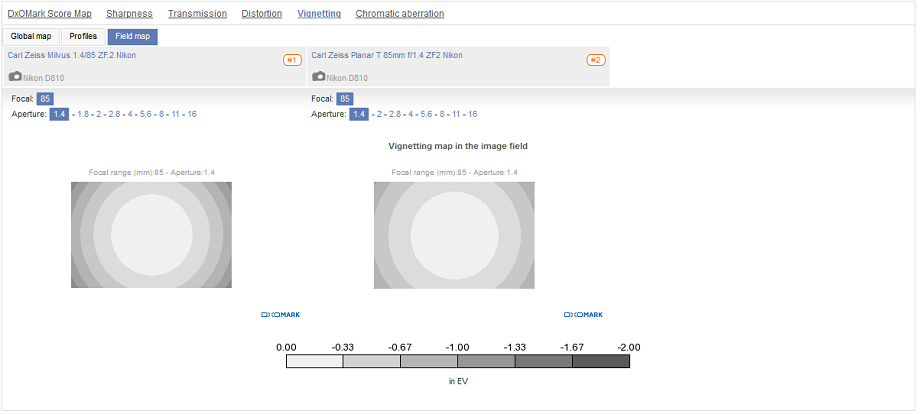



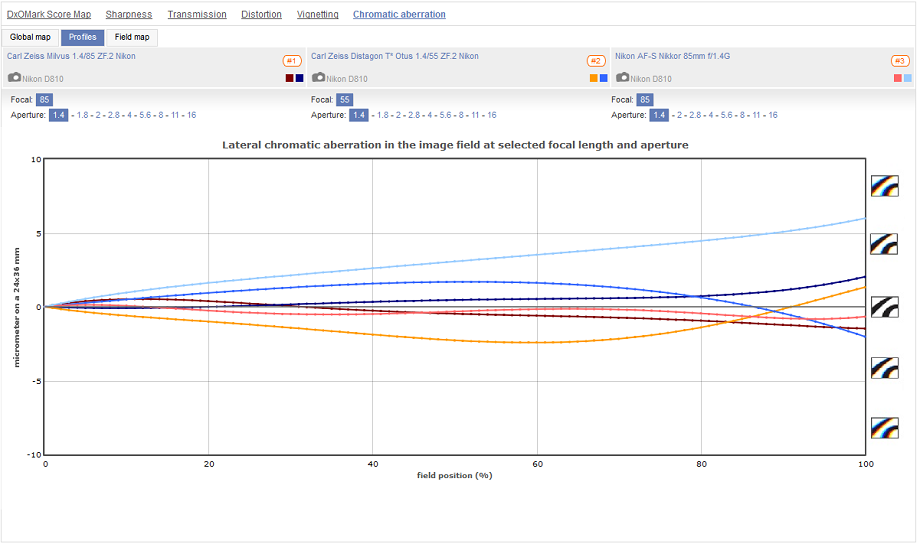

DXOMARK encourages its readers to share comments on the articles. To read or post comments, Disqus cookies are required. Change your Cookies Preferences and read more about our Comment Policy.